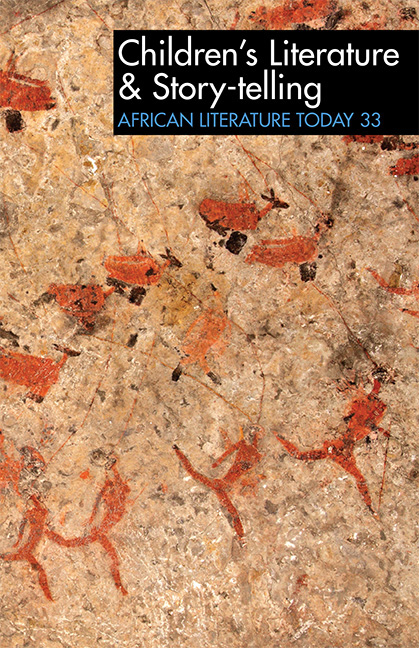The Expatriated African Folktale: Exploring Adaptation in Juliana Makuchi’s The Sacred Door & Other Stories
Published online by Cambridge University Press: 22 May 2021
Summary
This essay examines the multiple but interconnected textual, metafictional, and paratextual aspects of Makuchi's 2008 collection The Sacred Door and Other Stories: Cameroon Folktales of the Beba. The aim is to reveal the complexity of the contemporary status of the ‘African folktale’ as both text and concept in a global literary context, in relation to the concept of children's literature, and as part of a discourse of the African diasporic experience. The Sacred Door consists of a Foreword by Isidore Okpewho, a Preface by Makuchi, 34 tales, and an Afterword by Makuchi. The paratextual elements of The Sacred Door – Okpewho's Foreword, and Makuchi's Preface and Afterword, as well as the book's front and back covers – attempt to supply contextual components necessary for understanding the tales as print versions of oral literature.
Even as The Sacred Door's paratextual elements depict the tales’ contexts through a series of discursive tensions that Okpewho and Makuchi inaugurate (an attempt at contextualization taken up by other paratextual components such as the image on the book's front cover) the metafictional and paratextual elements of The Sacred Door ultimately point to the impossibility of re-creating the oral experience on the printed page. In her study of many aspects of the relationships between African oral arts and the African novel), Eileen Julien notes that oral tales cannot be understood in isolation from their contexts:
There are, first of all, those written narratives that retell narratives of the oral tradition (A. Tutuola's Palm-Wine Drinkard, D. T. Niane's Sundiata). Because the new context of enunciation implies shifts in audience and message, such written texts are, of course, never transparent or equivalent copies of oral stories… ( Julien 1992: 26)
The Sacred Door perfectly fits this definition as a ‘written narrative that retells narratives of an oral tradition’. Julien's attention to ‘the new context of enunciation’ and ‘shifts in audience and message’– from the scene of the performance of the oral tale to the printed page and a text published for an audience of readers instead of listeners/watchers/co-participants – points to her recognition ‘that speech and oral traditions cannot be grasped adequately from paper representations’, and that the study of orality ‘is not simply a matter of “collecting stories” but, ideally, of understanding performances as do their participants’ (Julien: 27).
- Type
- Chapter
- Information
- ALT 33 Children's Literature & Story-tellingAfrican Literature Today, pp. 82 - 95Publisher: Boydell & BrewerPrint publication year: 2015

